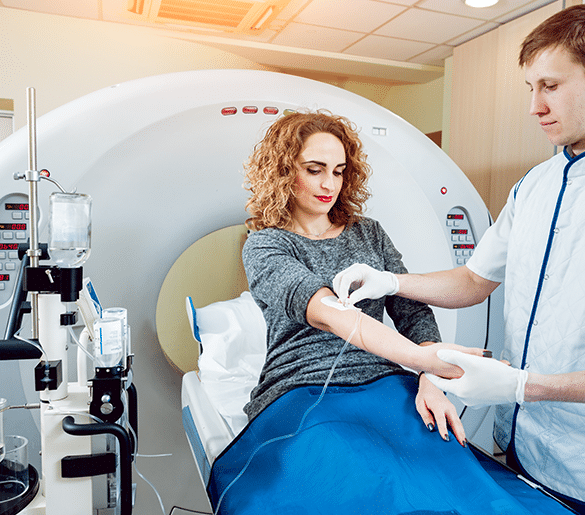Find Your Lifeline: Understanding the Nearest Emergency Room
In times of medical emergencies, knowing the nearest emergency room can make all the difference. Whether it’s a sudden accident, severe chest pain, or a life-threatening condition, having quick access to an emergency room ensures timely and efficient medical care. At Er of Coppell, we’re committed to helping you understand the importance of emergency care and how to locate the nearest facility for urgent situations.
What is an Emergency Room?
An emergency room (ER) is a specialized department within a hospital or healthcare facility that provides immediate medical attention for critical and life-threatening conditions. Staffed by highly trained professionals, including emergency physicians, nurses, and specialists, the ER is equipped to handle a wide range of medical emergencies such as:
- Heart attacks and strokes
- Severe injuries from accidents
- Respiratory distress
- Uncontrolled bleeding
- High fever in infants or elderly individuals
Why Knowing the Nearest Emergency Room is Crucial
Emergencies strike without warning, and every second counts. Knowing the location of the nearest ER ensures that you or your loved ones can receive immediate care. Here are some key reasons why this knowledge is essential:
1. Faster Response Time
During emergencies like cardiac arrests or trauma, quick access to medical care can significantly improve survival rates. Having the location of the nearest ER saves valuable time.
2. Peace of Mind
Preparedness alleviates stress during emergencies. Familiarizing yourself with nearby emergency services provides peace of mind for you and your family.
3. Better Decision-Making
When you’re aware of your options, you’re better equipped to decide where to go based on the severity of the situation.
How to Locate the Nearest Emergency Room
Finding the nearest emergency room is easier than ever, thanks to modern technology and community resources. Here are a few tips to help you locate one:
1. Use Navigation Apps
Applications like Google Maps or Apple Maps can quickly provide directions to the nearest ER. Simply search for “nearest emergency room” and follow the navigation.
2. Check Your Local Hospital’s Website
Most hospitals list their emergency services and provide contact details and directions on their websites.
3. Emergency Hotline Services
Calling 911 in the U.S. connects you to emergency dispatchers who can guide you to the nearest ER while coordinating ambulance services if needed.
4. Familiarize Yourself with Local Options
If you live in Coppell or nearby areas, knowing locations such as Er of Coppell ensures you’re prepared for emergencies.
What to Expect at the Emergency Room
Visiting the ER can be daunting, especially if you’re unsure about the process. Here’s a quick overview of what to expect:
1. Triage Assessment
Upon arrival, a triage nurse evaluates the severity of your condition to prioritize care. Patients with critical issues like chest pain or severe injuries are treated first.
2. Diagnostic Tests
Depending on your condition, you may undergo tests such as X-rays, blood work, or CT scans for accurate diagnosis.
3. Immediate Treatment
The ER team administers immediate medical intervention to stabilize your condition.
4. Admission or Discharge
Once stabilized, patients are either admitted for further care or discharged with follow-up instructions.
Choosing the Right Emergency Room
Not all emergency rooms are the same. Here are factors to consider when selecting the nearest ER:
1. Proximity
Choose an ER that is closest to your location to minimize travel time.
2. Specializations
Some ERs specialize in specific emergencies, such as pediatric care or cardiac emergencies. Check if the facility suits your needs.
3. Wait Times
Facilities with shorter wait times ensure faster treatment. Many ERs now display real-time wait times on their websites.
ER Alternatives for Non-Emergency Situations
Not all urgent health concerns require a visit to the emergency room. For non-life-threatening conditions, consider the following alternatives:
- Urgent Care Centers: Ideal for minor injuries, infections, or illnesses that require prompt attention but aren’t life-threatening.
- Primary Care Providers: For routine health concerns, your primary doctor may provide the necessary care.
- Telemedicine Services: Virtual consultations can address some medical issues without requiring an in-person visit.
Frequently Asked Questions (FAQs)
How do I know if my condition requires an ER visit?
Severe symptoms such as chest pain, difficulty breathing, uncontrolled bleeding, or signs of a stroke warrant immediate ER care.
What should I bring to the emergency room?
Carry a valid ID, insurance card, list of medications, and details of any allergies or medical history.
Are emergency rooms open 24/7?
Yes, all emergency rooms operate 24/7 to provide care at any time of day or night.
Can I call ahead before visiting an ER?
While calling ahead isn’t typically required, some facilities offer pre-registration or wait-time updates to streamline the process.
Does insurance cover emergency room visits?
Most insurance plans cover ER visits, but it’s advisable to check with your provider regarding copays or coverage limits.
Final Thoughts
Emergencies demand swift action, and knowing the nearest emergency room ensures you’re prepared to act when every second counts. At Er of Coppell, we emphasize the importance of accessible and efficient emergency care for all. Familiarize yourself with local options, and don’t hesitate to seek immediate help when needed. Your health and safety are always the top priority.
For more blogs visit https://empireadda.com/



